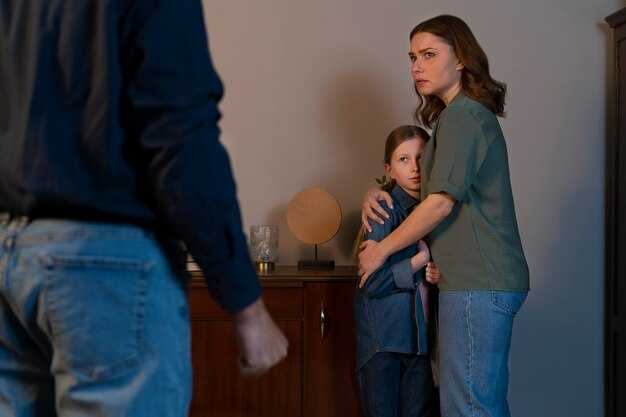Have you ever wondered how people with a dismissive-avoidant attachment style change as they grow older? Do they mellow and become more open-hearted with time, or do their defenses thicken and their solitude deepen? That’s the subject here. This attachment pattern rarely just vanishes with age — it shifts. Sometimes it erupts into a dramatic midlife upheaval. Sometimes it ossifies into decades of emotional withdrawal. And occasionally, though not often, it becomes the basis for genuine healing and transformation. First, let’s be clear: dismissive-avoidant people are not villains. They are survivors — typically of emotional neglect or upbringing in environments where needs were unmet, affection came with strings attached, and showing vulnerability felt unsafe. Consider how a child would react if every display of feeling led to being ignored, criticized, or punished. The natural response is to shut down, to perform for approval, to hide the real self behind a mask because being authentic felt dangerous. That is the survival template many dismissive-avoidants carry into adulthood. But the strategy that protected them as children often becomes maladaptive later on. The emotional armor that once worked starts to harm them. In their twenties and thirties they may glide through life keeping relationships casual and light, but as years accumulate, the emotional cost of that avoidance mounts. What does this often lead to? Frequently a midlife crisis. The 50-year-old who impulsively buys a flashy sports car. A parent who walks away from family to “find themselves.” Or a quieter wake-up call — someone at 45 who admits, “I don’t even know who I am.” Yet many dismissive-avoidants never break free from the pattern, repeating the same relational script into their seventies or eighties: constantly seeking connection but terrified of genuine intimacy. Others, however, do change — sometimes driven by rock bottom — and can fundamentally rework their attachment style, even late in life. To understand why this happens, it’s essential to trace the roots back to childhood, because that’s where the blueprint is drawn. No infant arrives determined to avoid closeness; this response is learned — a survival mechanism. Most dismissive-avoidant adults were raised amid emotional neglect, which is not always overt abuse but often subtle indifference. Picture a child who runs to a caregiver full of excitement or tears and is met with coldness or harshness: “Stop crying, toughen up.” Over time the child internalizes that feelings don’t matter and needs are burdensome, so shutting down feels safer. In many cases there’s an added layer: demanding or narcissistic parents who prize flawless performance — perfect grades, wins, achievements — and withdraw warmth when those standards aren’t met. Love becomes conditional; validation is given for accomplishments, not simply for being. In that environment a child learns to people-please, sacrifice personal wants, and perform to gain approval. Beneath that performance, shame takes root — a persistent sense of being defective and unlovable as they truly are. Imagine a little boy proudly presenting a drawing and receiving criticism instead of encouragement: “Why didn’t you do it this way?” Multiply countless small moments like that across years and you end up with a nervous system wired to believe vulnerability equals danger and that approval must be earned. This wiring shapes the adult nervous system: deep intimacy feels perilous, closeness triggers alarm, and disclosing inner life reads as weakness. So the adult learns to project an image of cool independence and control — offering only enough warmth to keep relationships intact but never enough to feel exposed. Paradoxically, they still long for validation and connection; because emotions were unsafe, they pursue affirmation through achievements, status, and admiration rather than through emotional openness and closeness. That’s why dismissive-avoidant adults often appear aloof or cold, when beneath the exterior sits a frightened child who never felt safe being authentic. When one watches this pattern unfold in someone’s forties, fifties, or seventies, what’s visible is decades of the original programming being replayed: midlife turbulence, fortified walls, and repeated relational cycles all stem from the same painful origin — a child who learned that love required hiding the true self. Understanding that origin reveals the pattern and is the first step toward breaking it. Moving into early adulthood — the twenties and thirties — the childhood blueprint begins to shape relationships in recognizable ways. On the surface, dismissive-avoidants often seem to be thriving: self-reliant, confident, sometimes charismatic. They might be the friend who never appears needy, who pursues career goals, travels, and values independence — traits that many find appealing. Yet real emotional intimacy terrifies them because their nervous system equates vulnerability with danger. When a relationship gets close, internal alarms sound: don’t get too near, you might be hurt. This produces familiar behaviors. A dismissive-avoidant may rush into a romance and initially seem deeply engaged — affectionate, flirtatious, lively — but when the relationship calls for deeper commitment or emotional transparency, they recoil. Communication declines, work becomes all-consuming, they ask for space. It’s not indifference so much as a protective reflex against perceived threat. In their twenties and thirties many of them can go years or even decades without recognizing the problem because society often rewards their style: independence, ambition, and self-sufficiency are praised, so their avoidance can look like success. At that stage the cost hasn’t fully revealed itself, even as relationship breakdowns accumulate and partners feel unseen or abandoned. The avoidant may blame the partner and move on, repeating the pattern until cracks widen and consequences catch up — setting the stage for a midlife turning point. Importantly, dismissive-avoidants aren’t malicious; they are acting from survival strategies that no longer serve intimacy. That’s why early adulthood can look polished from the outside while quietly planting the seeds of future hurt. As they enter their thirties, forties, and fifties, the long-term effects of running the same defense for decades start to surface. Continually suppressing the true self exacts a cost, and eventually the bill comes due. This is often when the much-discussed midlife crisis appears. Not everyone experiences one, but dismissive-avoidants encounter it with surprising frequency because they’ve spent years ignoring their own emotional needs, numbing feelings, and conforming to expectations. After thirty, forty, or fifty years of that pattern, pressure builds until it erupts. The manifestations vary: on the milder side, it may be buying an attention-grabbing sports car, picking up a new hobby, or splurging on travel — symbolic attempts to reclaim suppressed joy and freedom. On the severe end it can be destructive: affairs, leaving long-term partners, abandoning families, and making impulsive choices that wound loved ones in search of an authentic self. From an outside view these acts often seem selfish or reckless, yet psychologically they are desperate attempts to discover a self that’s been sidelined for decades. Looking around at one’s life and realizing many choices were made from a place of fear and approval-seeking rather than authenticity can be terrifying. Instead of sitting with that pain, some swing to the opposite extreme and rebel, chasing experiences that feel liberating. But such shifts rarely resolve the underlying problem; once novelty fades, the entrenched patterns of withdrawal and blame tend to resurface. True repair demands honest self-reflection, which for dismissive-avoidants threatens the core shame of being defective. To accept responsibility — “I hurt someone; I withdrew because I was afraid” — feels like a confirmation of that shame, so projection and outward blame often persist. That is why many remain trapped even after dramatic upheavals. Yet there is hope: for some, the pain of a midlife collapse becomes the catalyst for change. When marriages fail, loneliness intensifies, and material fixes fall short, the pain can finally outweigh the terror of looking inward. Then some begin to take real steps toward healing. Midlife can therefore mark a fork in the road: it either deepens avoidance or launches a slower journey toward growth, and the chosen path dramatically shapes the years that follow. Turning to later life — the sixties, seventies, even eighties — the patterns can be deeply entrenched. Decades of emotional distance and habitual suppression acquire a momentum of their own. Without intentional inner work, the same cycle repeats: intense beginnings followed by withdrawal, excuses, and blaming when intimacy increases, followed by new relationships where the same script plays out. Age alone does not dissolve the pattern. Older adults with dismissive tendencies can still charm a new partner and then shut down when asked for deeper commitment; they can still leave marriages when vulnerability looms. While it may look like bad luck in love, it’s usually the same avoidant dynamic replayed with new faces. In later life the consequences often hurt even more. Peers may enjoy long-term partnerships and strong support networks while the avoidant, having kept others at arm’s length, faces isolation. The walls built for protection become the barriers that prevent being truly known. Why is it so difficult to change at this stage? Because admitting responsibility still cuts into that old wound of shame: to accept fault can feel like declaring oneself inherently flawed. Projection and self-justification remain easier options. Yet most dismissive-avoidants still yearn for connection; they want love, but cannot tolerate the vulnerability it requires. Tragically, many go to their graves having never allowed someone fully in, living a life of partial connection. That said, it’s not a universal fate: some people in their sixties or seventies reach a breaking point where loneliness becomes unbearable and finally spurs transformation. Which brings up the central question: can a dismissive-avoidant truly change, or are they condemned to repeat the pattern? The answer is: change is possible — even profound change — but it almost always requires hitting rock bottom first. Rock bottom varies: a marriage falling apart, a partner walking away, or the crushing accumulation of loneliness can all serve as catalysts. When the pain of consequences finally outweighs the fear of self-examination, the question shifts from “What’s wrong with my partners?” to “What’s happening inside me?” That moment opens the door to change. Neuroscience offers encouraging news: the brain remains plastic across the lifespan, meaning that new attachment patterns can be learned even into older age. But this rewiring takes deliberate, often uncomfortable effort: sustained therapy, practicing vulnerability, learning to tolerate emotion rather than shutting it down, accepting accountability instead of projecting blame, and slowly building trust in relationships. Most dismissive-avoidants don’t reach this work in their twenties or thirties because the immediate consequences aren’t yet overwhelming; but in middle age, after repeated failures, change becomes likelier. There are examples of people in their fifties who, after multiple divorces, finally sought to understand their patterns and — with steady support — opened up enough to form secure, lasting bonds. So yes, transformation is possible, but it typically requires two things: hitting a sufficiently painful low and then choosing to engage in the difficult inner work. If neither occurs, the cycle persists. What does all this mean for someone who loves a dismissive-avoidant — a partner, friend, or family member? Being on the receiving end of avoidant behavior can be deeply wounding. You invest emotionally, seek closeness, and face withdrawal, silence, or requests for space. Over time you may begin to question yourself: Am I too much? Am I unlovable? If this resonates, hear this clearly: their avoidance is rooted in their wounds, not in your worth. You didn’t create their shame or their fear of intimacy; you simply encountered it. Still, loving someone with this style can trap you in a harmful cycle of waiting — waiting for them to change, to appreciate you, to break their pattern. That hope is understandable, but waiting can be dangerous because real change only happens if they choose it. You cannot force someone into honest self-examination or heal their wounds by sheer devotion. If their actions show they aren’t willing to do the work, staying in hope can erode your self-worth. So what can you do? First, watch for accountability. The clearest sign of growth is whether they can say, “I pulled away because I was scared,” rather than shifting blame. Ownership of patterns is key. Second, protect your own emotional health by setting boundaries and asking whether you’re receiving the connection and partnership you need or settling for crumbs while hoping tomorrow will be different. Third, believe actions over words. Dismissive-avoidants can make promises, but consistent behavior — not rhetoric — reveals their true capacity for closeness. Finally, remember you deserve a relationship that feels emotionally safe: a partner who meets you in intimacy rather than fleeing from it. Change is their responsibility; it’s not your job to drag them into it. Support them if they’re genuinely doing the work, but guard your own worth and needs. Ultimately, the most important relationship is the one you have with yourself. So what’s the overall arc for dismissive-avoidant attachment across the lifespan? It often begins in childhood with emotional neglect and shame, manifests in early adulthood as an attractive form of independence that masks avoidance, sometimes erupts in midlife as identity crises and impulsive choices, and in later years can cement into repeated cycles of pushing people away and living in isolation. Yet that is not an immutable destiny. Change can occur even into middle and later life through self-reflection, accountability, and the willingness to face old wounds. The brain can rewire; it is never too late to learn to love and be loved more securely. If you have loved someone with this pattern, remember: their behavior reflects their wounds, not your value. You can’t force them to heal, but you can protect yourself by setting boundaries and choosing relationships where love feels safe. Dismissive-avoidants face two main futures: continuing the cycle or taking the difficult path toward growth and genuine intimacy. Which path they take is ultimately their choice. Yours is the choice to see the pattern clearly, to uphold your self-worth, and to refuse to settle for a love that leaves you feeling unseen — because lasting, authentic connection is possible, and you deserve it.



 Когда Обесценивающие Избегающие Люди Становятся Старше… Кризис среднего возраста не за горами | Стиль избегающей привязанности">
Когда Обесценивающие Избегающие Люди Становятся Старше… Кризис среднего возраста не за горами | Стиль избегающей привязанности">

 Why your Avoidant partner is Stonewalling you and how I Stopped doing it.">
Why your Avoidant partner is Stonewalling you and how I Stopped doing it.">
 How to Keep Narcissistic Parents From Controlling Your Life">
How to Keep Narcissistic Parents From Controlling Your Life">
 Your Body Is Warning You! — The REAL Reason You’re So Overwhelmed">
Your Body Is Warning You! — The REAL Reason You’re So Overwhelmed">
 A Culture of Appreciation is Essential in your Relationships">
A Culture of Appreciation is Essential in your Relationships">
 Forgiveness won’t save a Relationship">
Forgiveness won’t save a Relationship">
 Breaking up: When to give them another chance.">
Breaking up: When to give them another chance.">
 How to Identify and Escape "Spiritual" Manipulation">
How to Identify and Escape "Spiritual" Manipulation">
 What To Do When You Can’t Let Go of The One You Love (4-Video Compilation)">
What To Do When You Can’t Let Go of The One You Love (4-Video Compilation)">
 Why Personal Development Fails Women With Trauma">
Why Personal Development Fails Women With Trauma">
 5 этапов избегания, которые показывают, пожалеют ли они о том, что отпустили вас | Стиль избегающего привязанности">
5 этапов избегания, которые показывают, пожалеют ли они о том, что отпустили вас | Стиль избегающего привязанности">